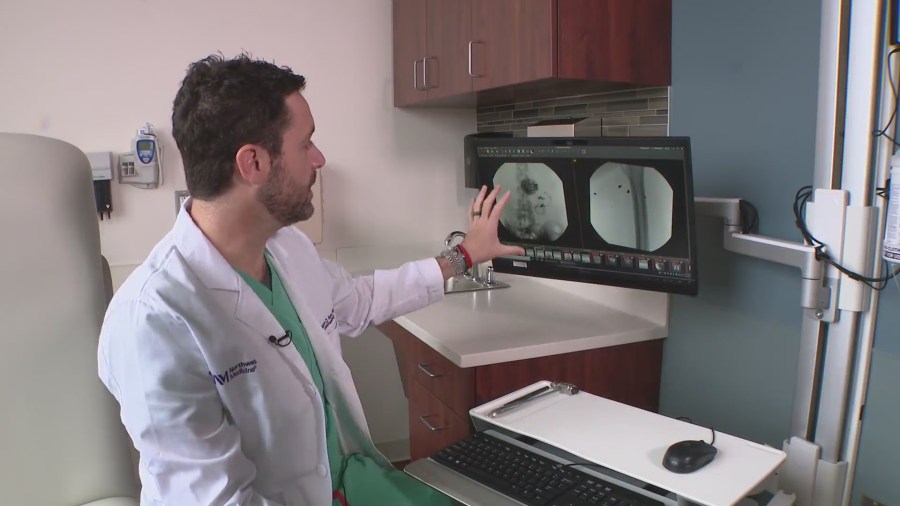It’s not just emotional pain that lingers after a shooting. Gunshot survivors are often left with chronic, debilitating physical conditions and they’re seeking relief from the daily reminder of the damage they suffered.
Liz Turnipseed was shot during the Highland Park Parade Shooting two years ago.
“My day-to-day was I would get up in the morning and hope that I would feel pretty good,” she said.
That’s how she has lived her life since July 4, 2022.
“As the day would go on my pain level would increase, so the more that I did, the worse it would get,” she said. “It can just be debilitating and take over your life.”
The bullets that entered Turnipseed’s body during the parade shooting left behind shrapnel fragments and caused serious damage to her leg and pelvis.
“I got very lucky because it didn’t hit my organs and it didn’t hit my bones,” she said.
But the wife and mom was left with nerve and tissue damage.
“I would get these shooting pains, inability to walk. And all these things that would happen and I didn’t really know who to go to,” she said.
Dr Jason Ross treats patients with chronic pain and that now includes gunshot wound survivors.
“When I first met her, we tried a number of different treatments for her including injections and medications,” he said.
He placed two sets of internal wires in Turnipseed’s lumbar area and two more at the base of her spine. An implanted battery pack powers a constant electrical stimulus to nearby nerve roots that lead to the spinal cord.
“So, if it’s a painful stimulus we can alter the way the brain perceives it and give someone pain relief,” Ross said.
The device essentially scrambles any pain signals stemming from the area injured by the gunshots. Turnipseed controls the level of stimulation through an app.
“I am generally at about probably a 50 percent reduction in my pain level,” she said.
“She experienced such a horrible event and to give her some sort of normalcy back in her life has just been one of the greatest experience and fulfilling events in my career,” Ross said.
“I’m walking differently. That was the first thing my husband said. He goes, ‘Look at you! You are walking almost normally now.’ I always had a hitch in my step from it because where my bullet was,” she said.
It’s not just the physical relief that’s helped improve her day-to-day.
“Not having the pain and not having the constant reminder of that day, it does give you that mental and emotional relief that I don’t have to think about this all the time,” she said. “You can’t help but do that. You get a shooting pain down your leg or through your pelvis that absolutely reminds you of, ‘Well yeah it’s shooting there because that is where the bullet went and that is where it tore through my body.’”
Turnipseed hopes sharing her story will help other gunshot wound survivors access the care and resources they require.
Sign up for our Medical Watch newsletter. This daily update includes important information from WGN’s Dina Bair and the Med Watch team, including, the latest updates from health organizations, in-depth reporting on advancements in medical technology and treatments, as well as personal features related to people in the medical field. Sign up here.
